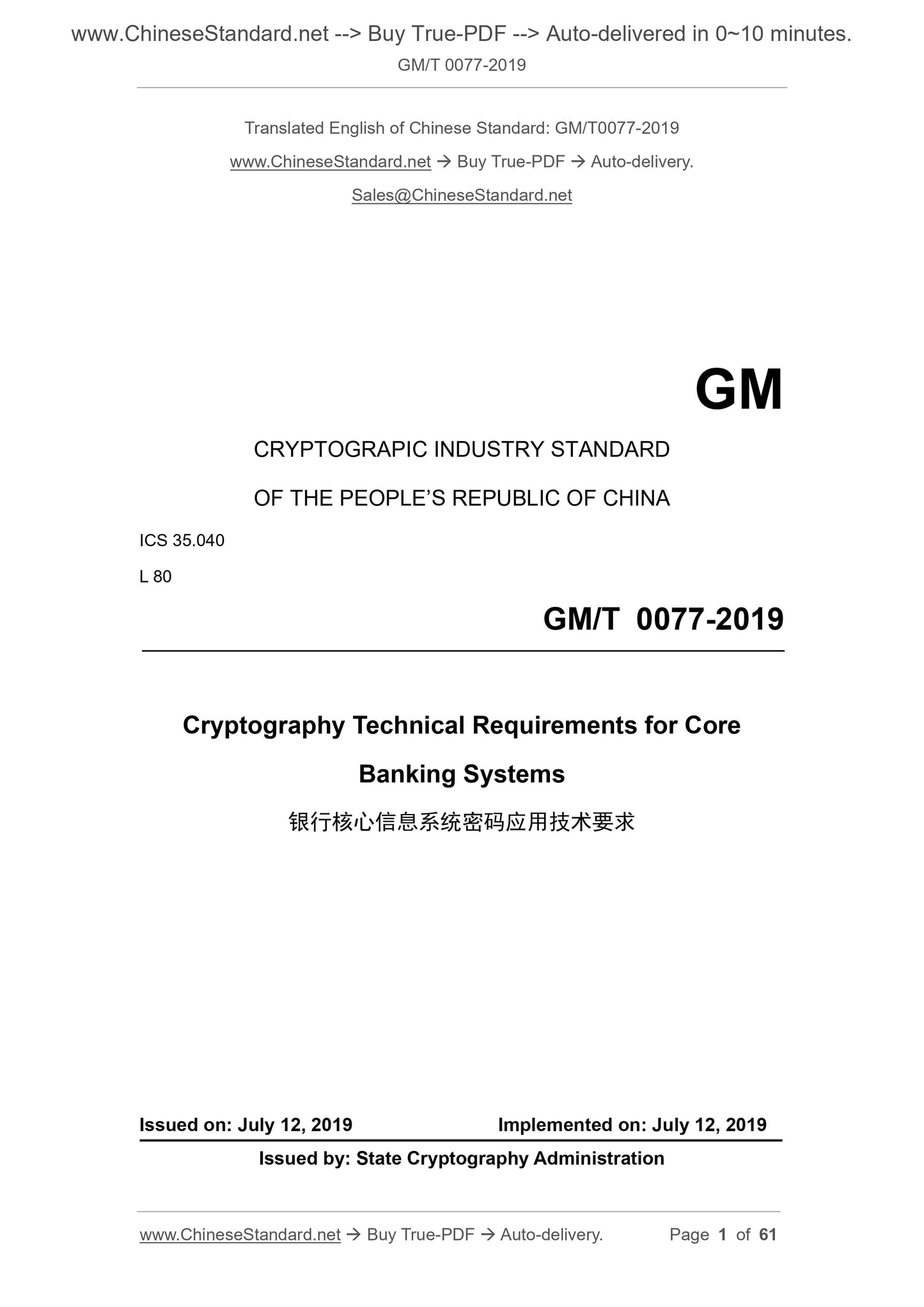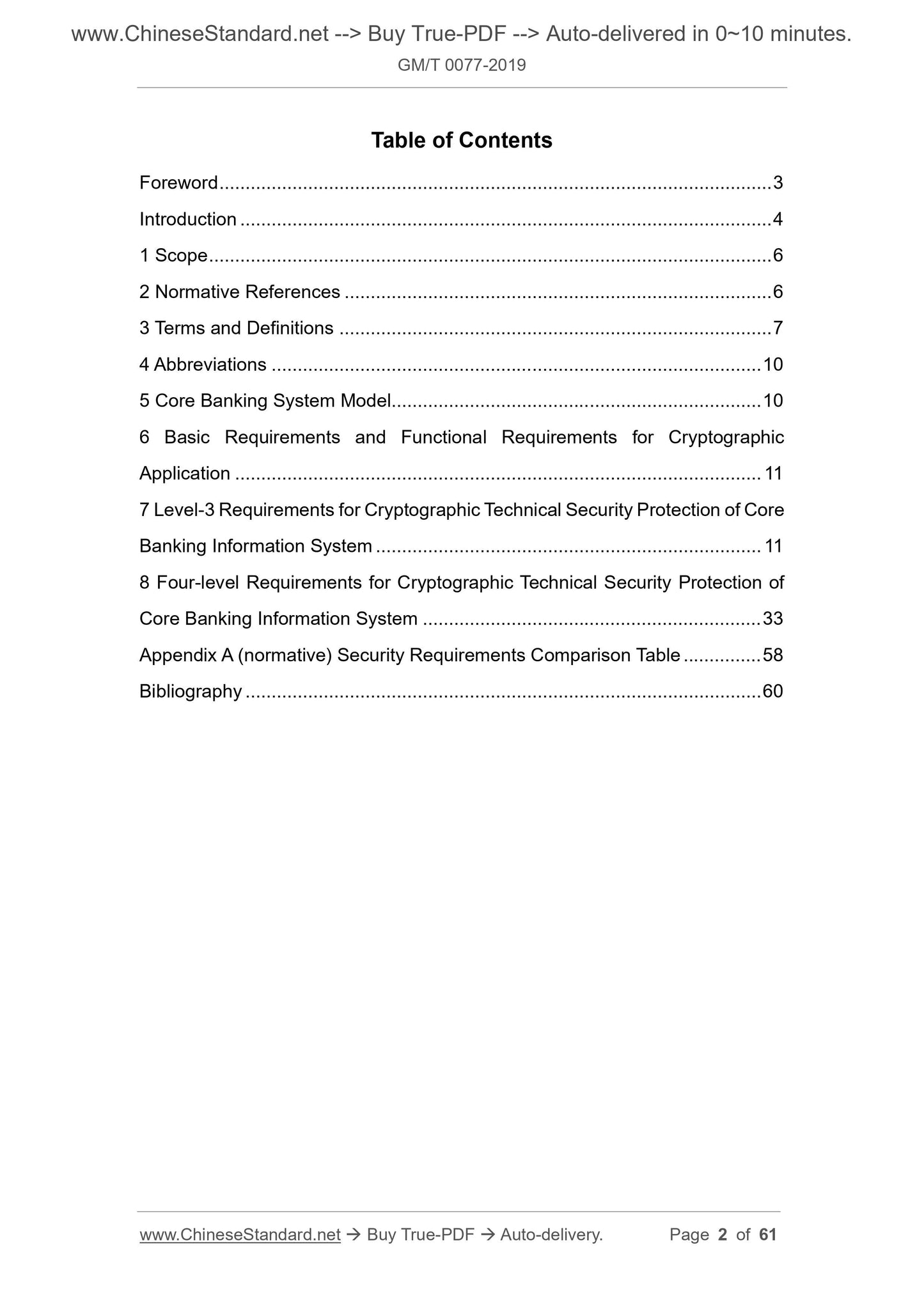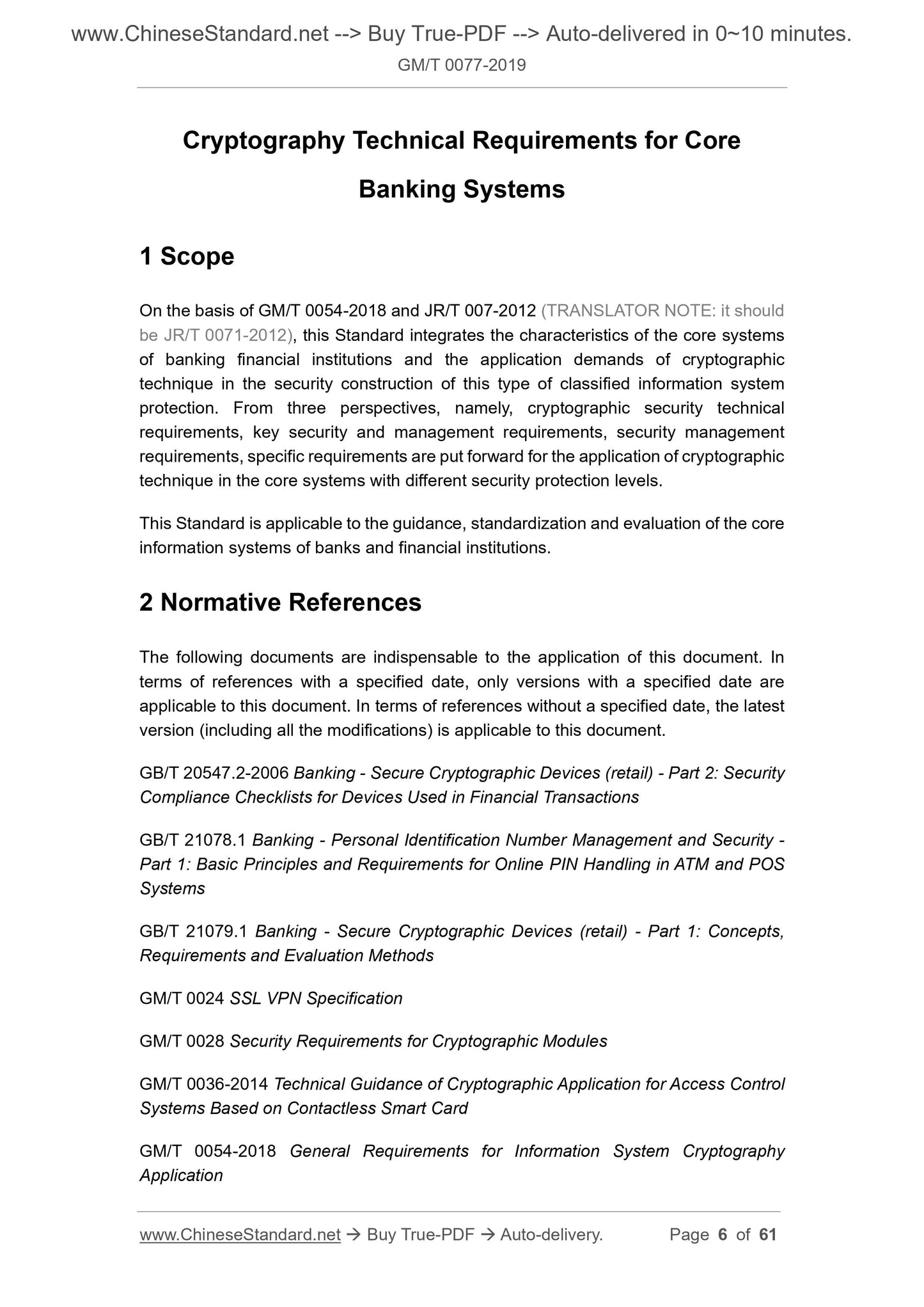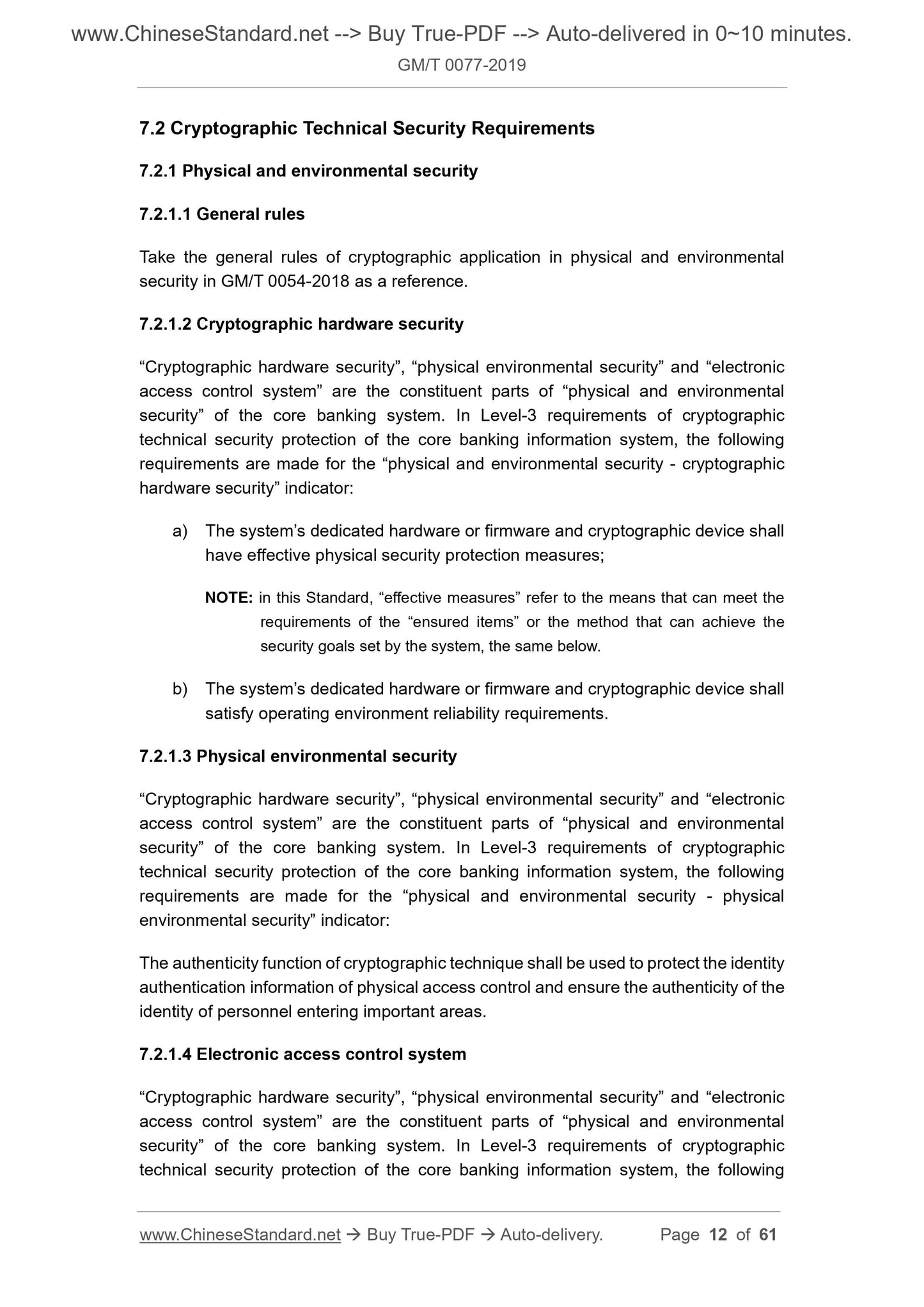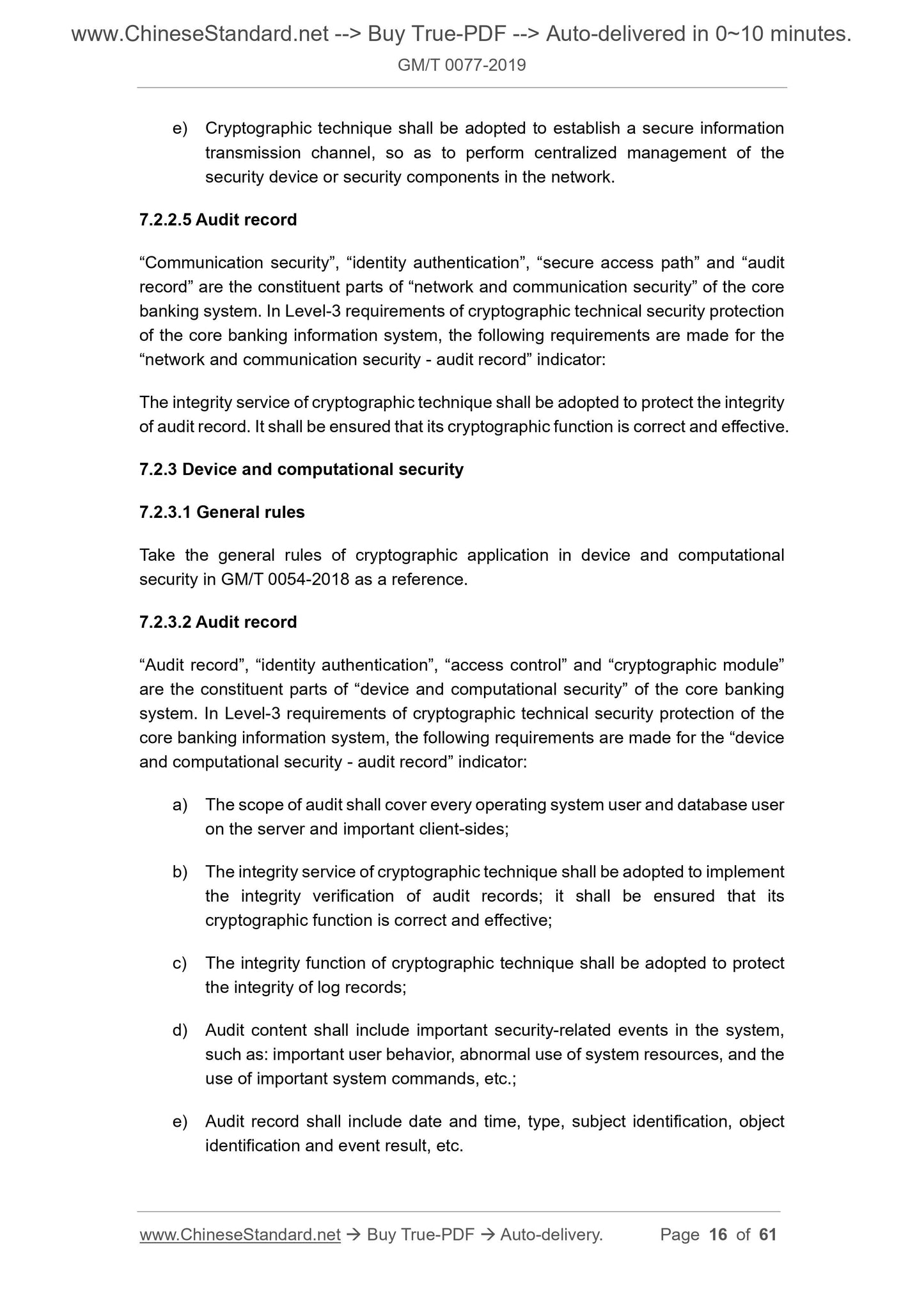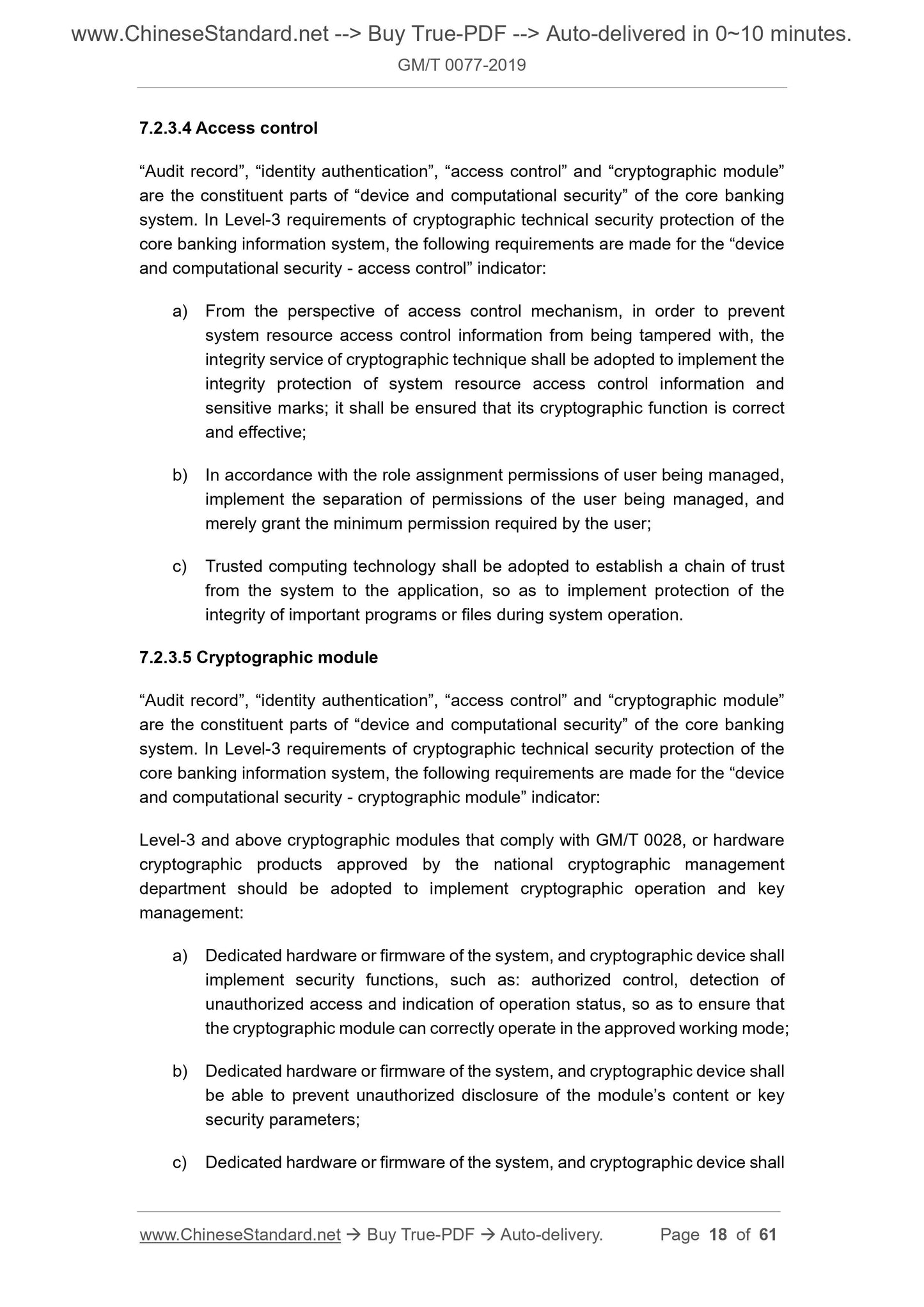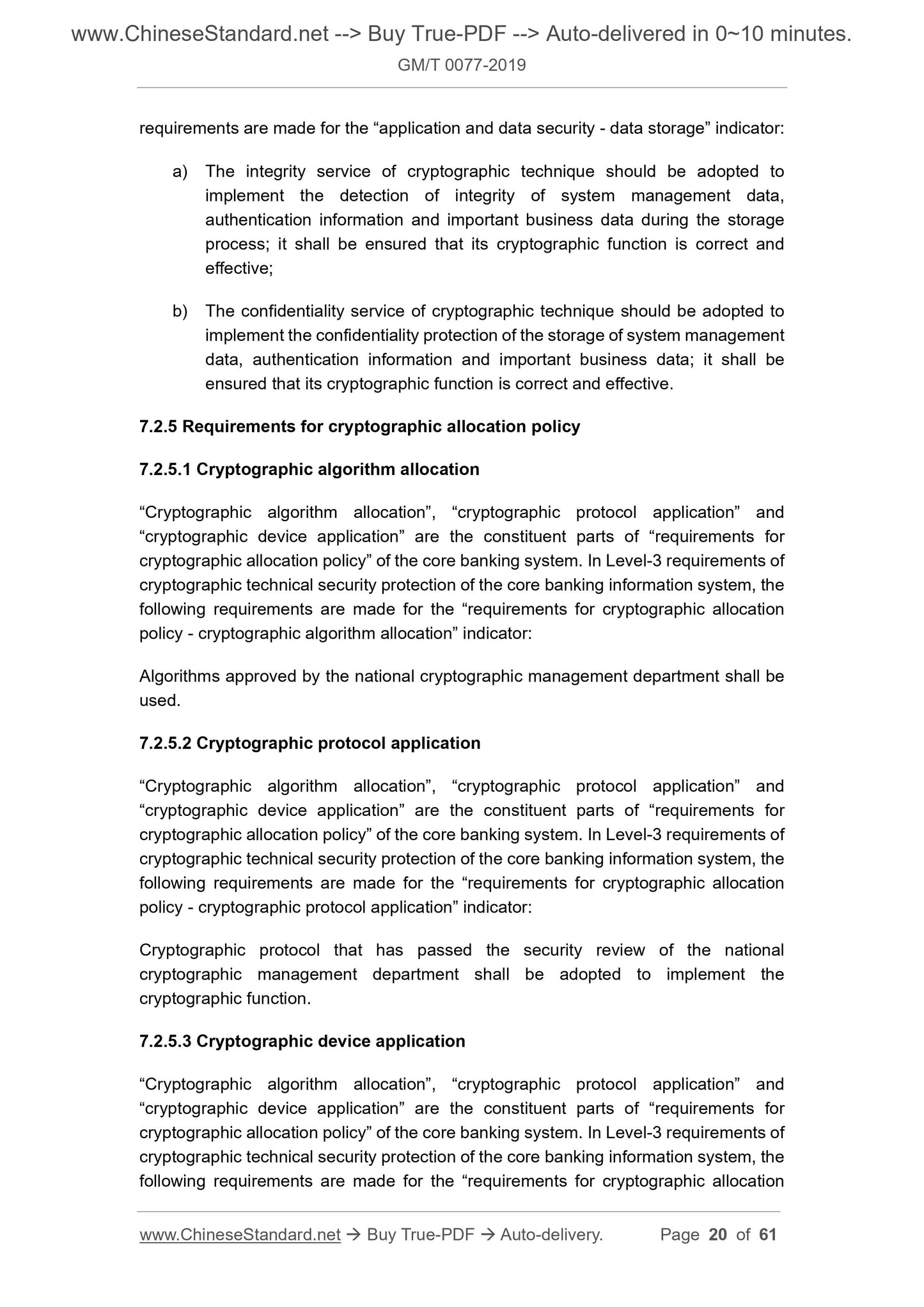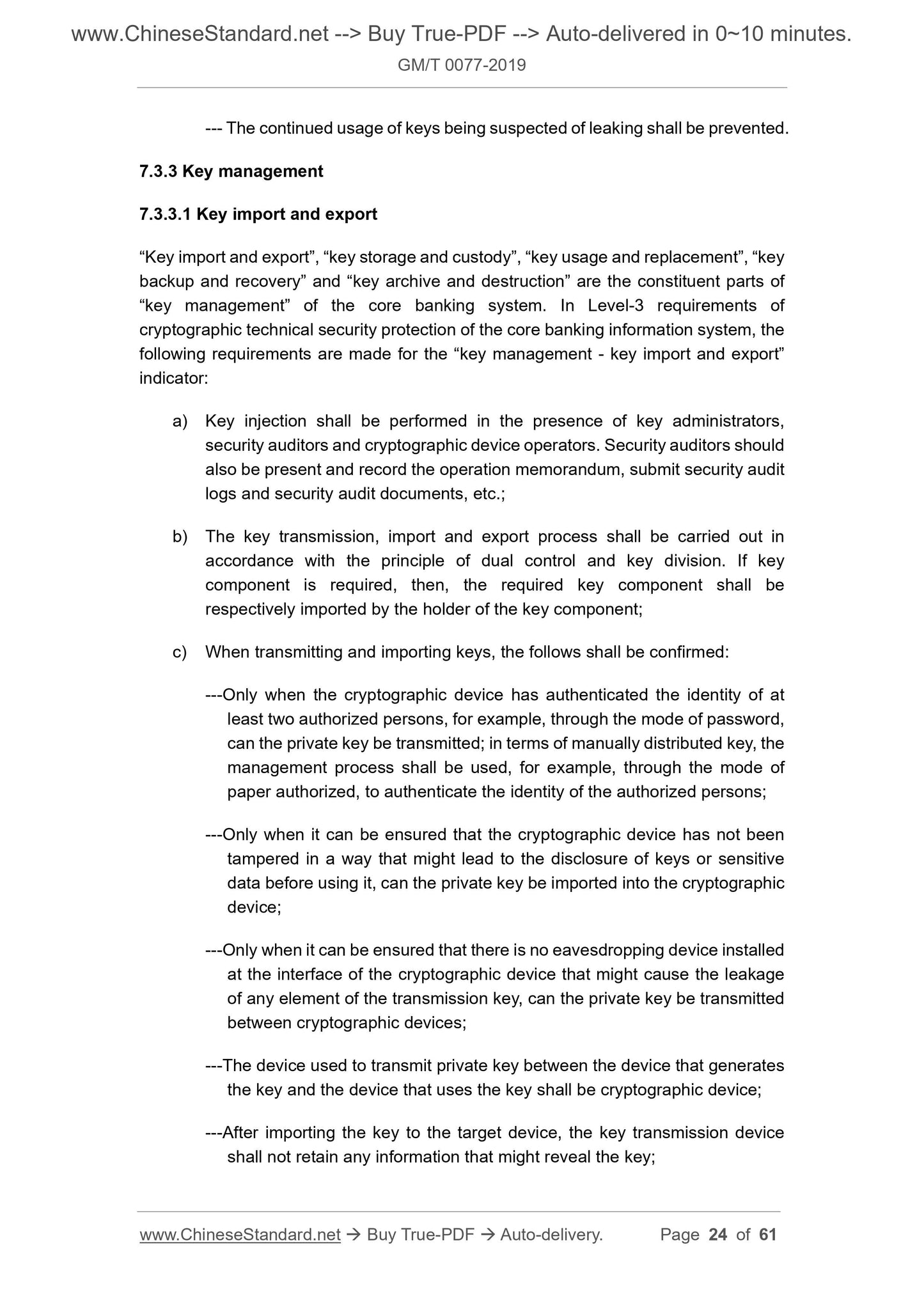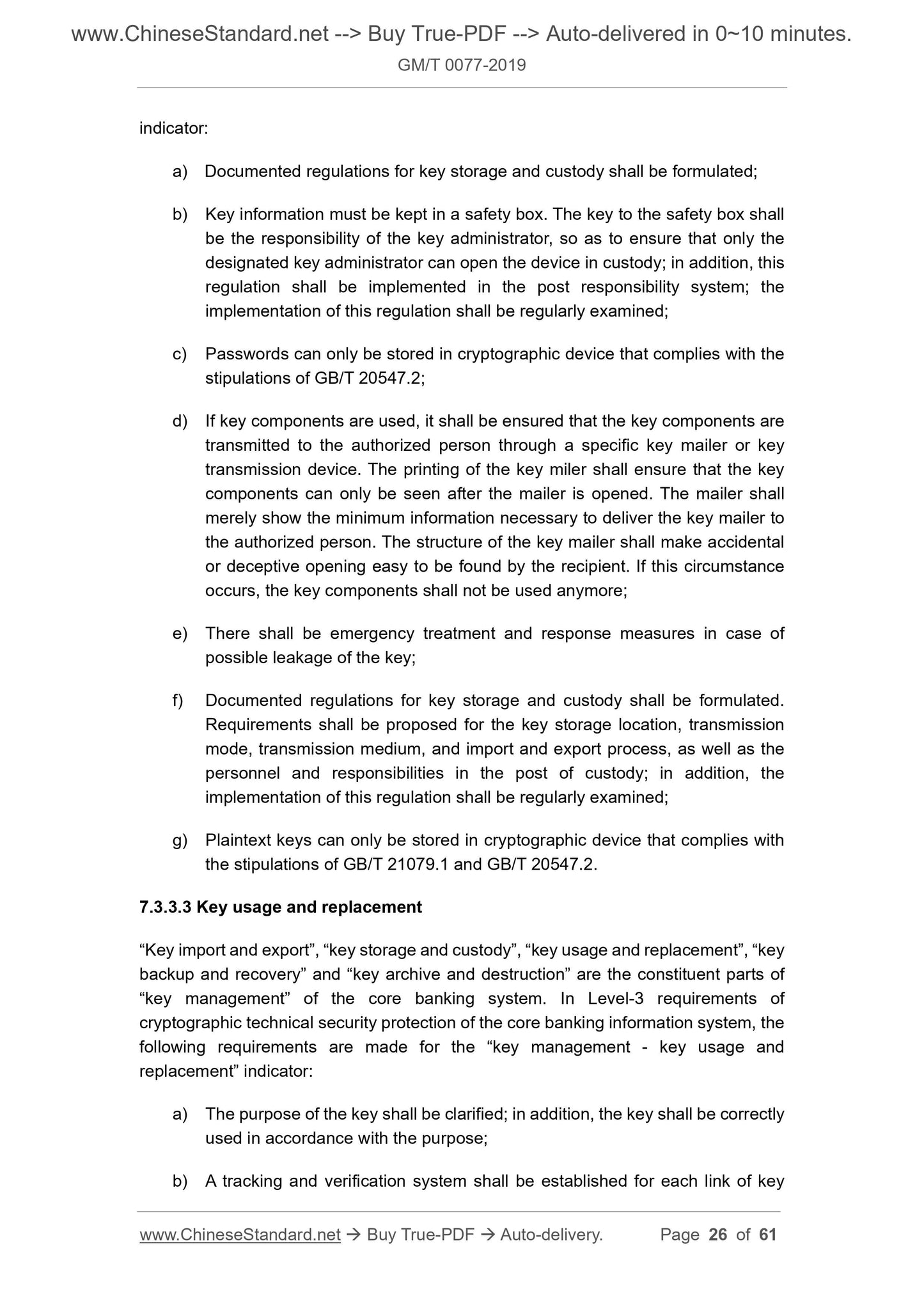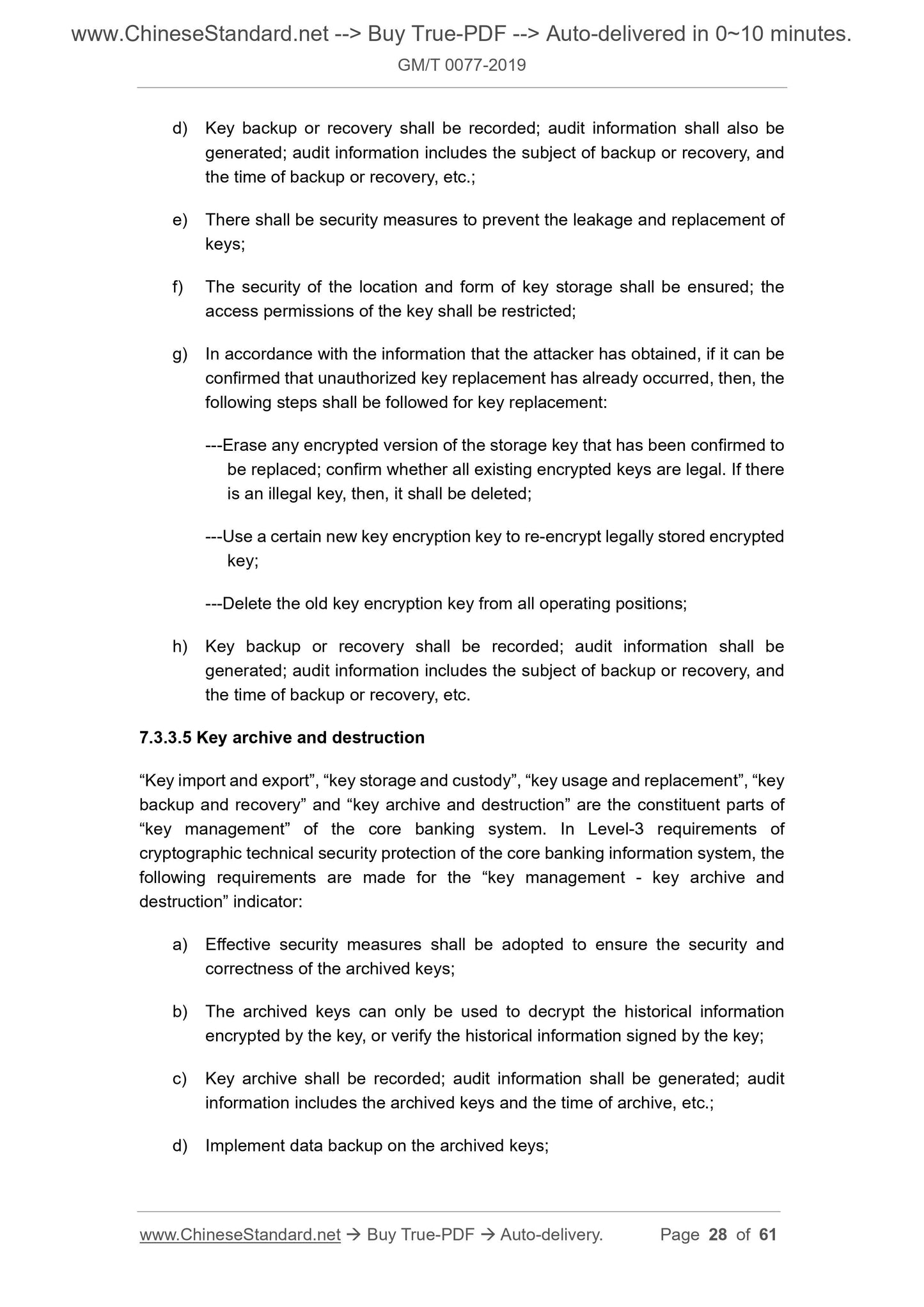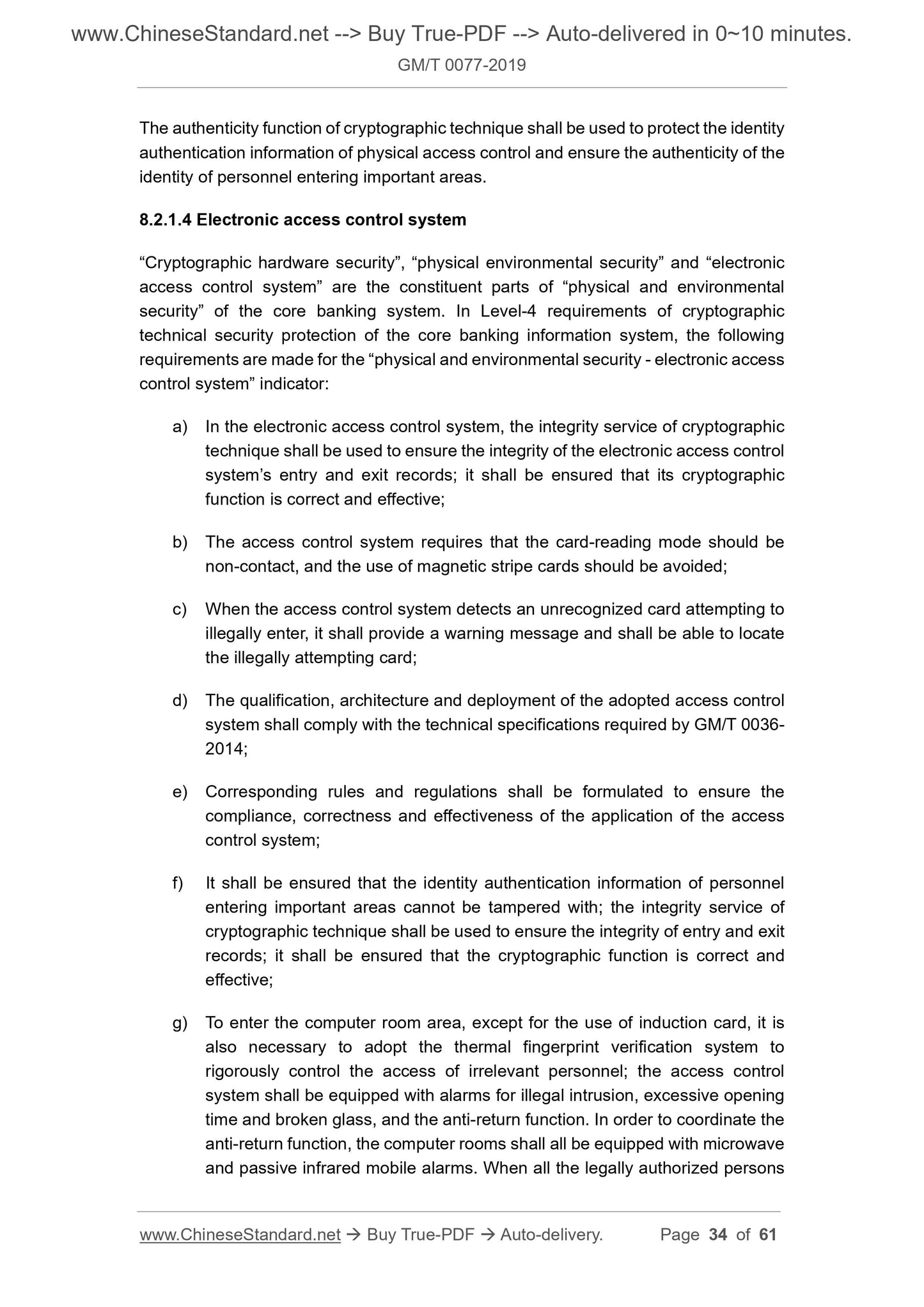1
/
of
12
www.ChineseStandard.us -- Field Test Asia Pte. Ltd.
GM/T 0077-2019 English PDF (GM/T0077-2019)
GM/T 0077-2019 English PDF (GM/T0077-2019)
Regular price
$430.00
Regular price
Sale price
$430.00
Unit price
/
per
Shipping calculated at checkout.
Couldn't load pickup availability
GM/T 0077-2019: Cryptography Technical Requirements for Core Banking Systems
Delivery: 9 seconds. Download (and Email) true-PDF + Invoice.Get Quotation: Click GM/T 0077-2019 (Self-service in 1-minute)
Newer / historical versions: GM/T 0077-2019
Preview True-PDF
Scope
On the basis of GM/T 0054-2018 and JR/T 007-2012 (TRANSLATOR NOTE: it shouldbe JR/T 0071-2012), this Standard integrates the characteristics of the core systems
of banking financial institutions and the application demands of cryptographic
technique in the security construction of this type of classified information system
protection. From three perspectives, namely, cryptographic security technical
requirements, key security and management requirements, security management
requirements, specific requirements are put forward for the application of cryptographic
technique in the core systems with different security protection levels.
This Standard is applicable to the guidance, standardization and evaluation of the core
information systems of banks and financial institutions.
Basic Data
| Standard ID | GM/T 0077-2019 (GM/T0077-2019) |
| Description (Translated English) | Cryptography Technical Requirements for Core Banking Systems |
| Sector / Industry | Chinese Industry Standard (Recommended) |
| Classification of Chinese Standard | L80 |
| Classification of International Standard | 35.040 |
| Word Count Estimation | 34,345 |
| Date of Issue | 2019 |
| Date of Implementation | 2019-07-12 |
| Issuing agency(ies) | State Administration of Cryptography |
Share
